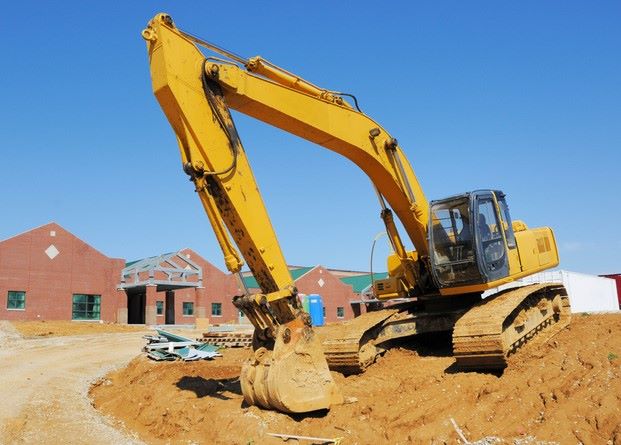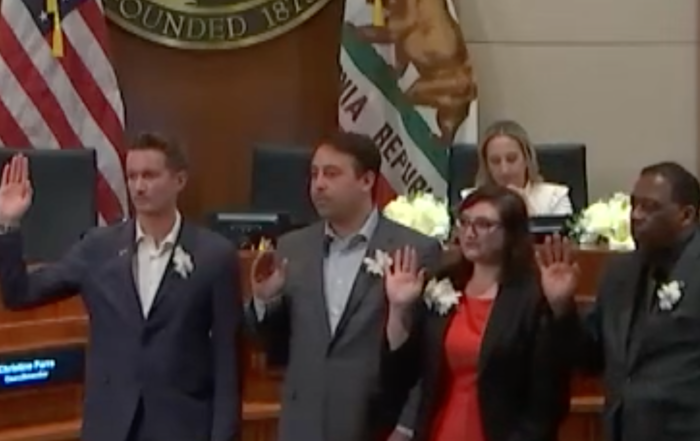This November, voters will decide on Measure US, a bond of up to $9 Billion for the Los Angeles Unified School District (LAUSD) aimed at facilities improvements at schools. Measure US, also called the Local Public Schools Safety and Upgrades Measure, would be utilized to “Update school facilities for 21st-century student learning and career/college preparedness; improve school facilities for safety, earthquakes, and disability access; upgrade plumbing, electrical, HVAC; replace leaky roofs; provide learning technology; and create green outdoor classrooms/schoolyards,” per the official ballot language. Measure US needs a 55 percent majority to pass.
The bonds would be repaid through a property tax of 2.5 cents per $100 assessed value annually which would potentially be collected until 2059. Property owners within LAUSD’s area of operation would expect to see the new property tax starting in the 2025-2026 fiscal year. Supporters of the measure say the bond would have far-reaching benefits for student learning and health while supporting the local economy and increasing climate resiliency.
In early August, the L.A. Unified Board of Education voted unanimously to add Measure US to the November ballot. Addressing the board, L.A. Unified Superintendent Alberto Carvalho said the bond was an urgent necessity in a district divided by inequality. “We have seen schools that are built as Taj Mahals with the latest and greatest technology, beautiful green spaces… and then you drive down the road one mile and you see a completely different world that I cannot explain and frankly, cannot accept,” Carvalho said.
Though the district has been working to confront those inequities, needs in the district far exceed present resources. The district reported that $80 Billion would be needed to effectively address all of the district’s immediate facilities needs.
Many of these needs require immediate attention from the district. The $9 Billion from Measure US would go to the first priority projects. The first month of the school year was marked by a severe heat wave and two earthquakes. The district estimates that 50,000 heating ventilation and air conditioning (HVAC) units need to be replaced immediately and 525 school buildings need to be retrofitted or replaced for earthquake safety. Millions of square feet of roofs, plumbing, and paving need to be replaced. More than 60 percent of school buildings are more than 50 years old and in need of improvements.
Disruptive and unhealthy conditions make for demoralized communities, board members said. Beyond ensuring the immediate safety of their students and staff, schools with adequate facilities are a boon for test scores, result in low suspension rates, and high attendance, board member Rocio Rivas said, quoting a report from the California Department of Education.
Beyond the emergency repairs and replacements, the measure would also fund the expansion of green spaces, build and modernize science labs and art spaces, and fill out the district’s fleet of electric buses.
Board Member Nick Melvoin, who represents the Westside in LAUSD District 4, said facility improvement was the top priority of his constituents. He was glad to see that the measure directly mirrored district priorities for greening, climate resiliency, and safety. “It’s not just about maintenance, it’s about designing the school district we want for the next 10, 20, 30 years,” Melvoin said.
But the next 30 years are determined by the district’s immediate future, Melvoin continued, adding that the Facilities and Procurement Committee was collaborating with the district to ensure the bond funds would be spent effectively and for the direct benefit of current LAUSD students.
One concern for some was the flexibility of bond spending – community input for the exact allocation ratio of funds was requested, some suggesting that particular areas of spending like charter schools, campus greening, early education, and adult education receive more than the district was initially indicating would be spent.
Michael Hammer, chair of the district’s Bond Oversight Committee, said the committee had not been consulted on the measure and hoped they would be included in the future under their oversight responsibilities to district stakeholders.
The district said the precise allocations for bond spending are flexible, and open to amendments and revisions by the board as needed and when unforeseen facility expenditures arise. Acknowledging concerns about the timing of the measure, Carvalho stressed that the bond was placed on the November ballot because of immediate improvement needs and because construction costs have significantly increased over the last four years. “We’ll be able to do a lot less the more we wait to pass this bond,” Carvalho said.
Detractors of Measure US say the bond is too costly, not representative of declining enrollment rates in the district, and overlaps with a previous bond they say the district hasn’t yet spent in full. The district clarified that all previous bond facilities’ funding has already been allocated to specific projects, even if not literally spent yet. The district also plans to pursue more funding from the state to fulfill its total facilities needs and the bond figure was made with enrollment rates in mind.
Proposition A, a state-level proposition for improvements to K-12 and community college facilities will also be on the ballot in November, providing an estimated $700 Million to L.A. Unified if passed by voters.
Photo by Purdue9394 on iStockphoto.com
Stay informed. Sign up for The Westside Voice Newsletter
By clicking submit, you agree to share your email address with Westside Voice. We do not sell or share your information with anyone.








